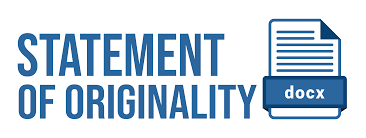THE COMMUNICATION FUNCTION COVERED IN GAN KIM YONG’S SPEECH ON RESPONSE TO CORONA VIRUS
DOI:
https://doi.org/10.32520/eji.v4i2.1098Keywords:
Communication function, Speech, Speech acts, Searle’s theoryAbstract
This research deals with how the language used in communication, especially in the form of speech. It addresses to describe the criteria and categories within utterances as well as the communication function of speech. The speech acts theory used in this research is from Searle (1976). The data source of research is an English speech text addressed by Singapore Health Minister Gan Kim Yong delivered in parliament on the government's response to the coronavirus on February 3rd 2020. This research finds the representatives with 199 utterances (73%) as the most common speech acts which are followed by the other categories; directives in 21 utterances (13%), commissives in 19 utterances (12%) and expressive in 4 utterances (2%). The analysis finds the speaker has the intention to provide sufficient information about the 2019 novel coronavirus based on the preponderance of representatives which are indicated by the use of claiming, stating, reporting, asserting, and defining utterances that provide evidence about the real circumstances happened such as data, reasons, rationale, and explanation. Thus, the belief of speaker within utterances guides the listeners for being aware of the current conditions relates to the coronavirus.
References
Diamond, A.S. (1959). The History and Origin of Language. London: Metheun and Co. Ltd
Pei, Mario. (1964). Voices of Man-The Meaning and Function of Language. London: George Allen and Union Ltd.
Richards, J.C. & Schmidt, R. (2002). Longman Dictionary of Language Teaching and Applied Linguistic. New York: Longman.
Finch, G. (2000). Linguistic Terms and Concept. New York: Palgrave Macmillan.
Searle, J. R. (1969). Speech Acts. Cambridge: Cambridge University Press.
Flowerdew, J. (2013). Discourse in English Language Education. New York: Routledge Taylor and Francis Group.
Dylgjeri, A. (2017). Analysis of Speech Acts in Political Speeches. European Journal of Social Sciences Studies. Volume 2, Issue 2.
Hashim, S.S.M. (2015). Speech Acts in Political Speeches. Journal of Modern Education Review. Volume 5, No. 7, pp. 699–706.
Akinwotu, S.A. (2013). A Speech Act Analysis of the Acceptance of Nomination Speeches of Chief Obafemi Awolowo and Chief M.K.O. Abiola. English Linguistics Research. Volume. 2, No. 1.
Searle, J. R. (1969). Speech Acts. Cambridge: Cambridge University Press.
Searle, J. (1976). The classification of illocutionary acts. Language and Society.
Kreidler, C.W. (1998). Introducing English Semantics. London: Routledge.
Yule, G. (1996). Pragmatics. Oxford: Oxford University Press.
Budd, R. W., Thorp, R. K., & Donohew, L. (1967). Content Analysis of Communications. New York: Macmillan.
Lindkvist, K. (1981). Approaches to Textual Analysis. In K. E. Rosengren (Ed.), Advances in content analysis. Beverly Hills, CA: Sage.
Tesch, R. (1990). Qualitative research: Analysis Types and Software Tools. Bristol, PA: Falmer




















